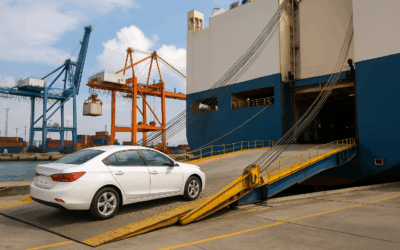Why Truck Drivers Need to Speak English — and What the New Rule Means for You
Auto transporters are back in the spotlight, and this time, it’s not about fuel prices or weather delays — it’s about language. In April 2025, President Trump signed an executive order requiring all commercial drivers in the U.S. to speak and read English proficiently. This may sound like a no-brainer to some, but it’s actually been a gray area in trucking for quite a while.
If you’re wondering why this is such a big deal, or how it might affect your auto shipment, you’re not alone. I get questions about it almost daily from customers. Whether you’re shipping a family SUV or a classic car across the country, knowing your driver understands the road signs, traffic alerts, and delivery details is critical.
Let’s talk about what this mandate means, why it matters, and how it could impact auto shipping moving forward.
Article Overview
- The New English Requirement for Truckers
- Why It Matters for Auto Shipping
- Are There Risks With Non-English-Speaking Drivers?
- What About Costs?
- What This Means for Carriers
- How American Auto Shipping Handles Compliance
- Author’s Insights
1. The New English Requirement for Truckers
In April 2025, the federal government reinstated a Department of Transportation rule requiring all commercial drivers to demonstrate the ability to read and speak English. This isn’t a brand-new law — it’s actually part of 49 CFR 391.11(b)(2) — but until now, enforcement was loose. A 2016 memo softened inspections, and drivers weren’t always tested.
That’s changed.
Under the new executive order, drivers can now be placed out-of-service if they can’t communicate in English. That includes the ability to read road signs, speak to inspectors, and complete paperwork.
The goal? Common-sense safety and communication.
2. Why It Matters for Auto Shipping
Let’s say you’re shipping your car from California to New York. Your driver is crossing multiple states, navigating weigh stations, detours, customer addresses, and last-minute delivery changes.
If they can’t read an “EXIT CLOSED AHEAD” sign, or they misunderstand pickup instructions because of a language barrier — well, that creates a big problem.
I’ve had customers tell me things like, “The driver showed up, but he didn’t understand the gate code” or “He called, but I couldn’t communicate with him.” When that happens, it delays the whole shipment, and it frustrates everyone involved.
This rule helps ensure your driver can:
- Read street signs and emergency alerts
- Understand GPS reroutes and toll road info
- Call and confirm delivery details
- Speak to DOT officials and police if needed
- Fill out logs and documents correctly
It may seem small, but those things make or break a smooth delivery.
3. Are There Risks With Non-English-Speaking Drivers?
Absolutely. Language barriers can lead to:
- Missed pickups or deliveries
- Failed inspections
- Safety risks on the road
- Customer miscommunication
- Extra costs from delays or cancellations
To be clear, many non-native English speakers are excellent drivers. That’s not the issue. The issue is whether they can perform the core communication tasks required by law and safety standards. That’s what this rule is reinforcing.
In this industry, there’s no room for confusion when 80,000-pound rigs are involved.
4. What About Costs?
It’s true — some customers may see slightly higher prices, especially if certain carriers are taken off the road due to language violations. Fewer eligible drivers can mean tighter supply, at least for a while.
But let’s be honest: Safety and reliability are worth the price.
Would you rather pay $50 more to know your driver can read a bridge clearance sign — or risk a totaled car and a missed delivery because they couldn’t?
It’s a small investment for peace of mind.
5. What This Means for Carriers
Carriers now need to ensure their drivers are compliant. That means:
- Testing English proficiency
- Updating training policies
- Monitoring communications more closely
Some small fleets may struggle to adapt, especially those who’ve hired drivers under more relaxed enforcement standards. But the writing’s on the wall — if you want to stay in business, you’ve got to meet the standard.
At the same time, carriers that already hire English-speaking drivers will likely benefit from increased demand and smoother inspections.
6. How American Auto Shipping Handles Compliance
We’ve always vetted our carriers thoroughly, and this rule only sharpens that process.
When we assign your vehicle to a driver, we check for:
- FMCSA registration
- Insurance coverage
- Clean safety records
- And now — English proficiency
If a carrier is placed out-of-service for language non-compliance, we relist your vehicle immediately and never charge you extra. That carrier is also flagged on our do-not-use list, which we update regularly.
Communication is key — and we make sure our carriers can handle it.
7. Author’s Insights
I talk to drivers and customers every day, and here’s what I can tell you: this rule is a step in the right direction.
Yes, it might cause a few bumps in the short term. Fewer carriers, longer booking times, maybe a bit more money. But long-term? It’s going to make your auto shipping experience smoother, safer, and more reliable.
I don’t care where a driver is from — if they can operate safely, follow the law, and communicate clearly, they’re welcome on the road. But if they can’t read an “OVERPASS 13’6” sign… they shouldn’t be hauling your vehicle.
At the end of the day, we’re all safer when drivers can read the road.



